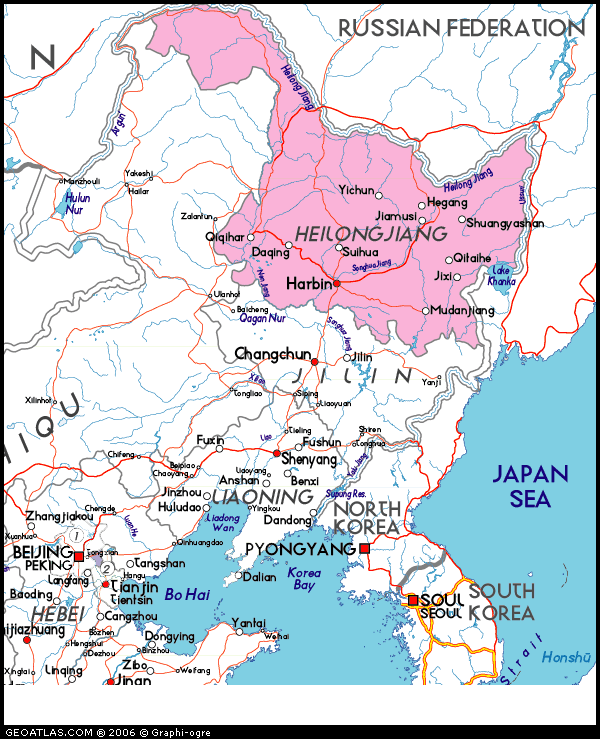|
Bordering
Russia, Inner Mongolia and Jilin province, China's
northernmost province is known to travelers largely
thanks to the otherworldly Harbin International Ice and
Snow Sculpture Festival (Jan 5-Feb 5 yearly), where you
can wander a fanciful frozen city featuring crystalline
castles, world landmarks from the Taj
Mahal to Beijing's Bird's Nest and over 2,000 other amazing ice sculptures.
|
 |
|
Heilongjiang's growing reputation as a
winter wonderland is enhanced by the presence of China's best ski
resorts, the Harbin Ice Lantern Festival, and an infusion of Russian
culture that is reflected in the region's architecture and cuisine. The
province, whose Chinese name translates to "black dragon river"—an
evocative name for the snaking and often snowbound waterway that forms
Heilongjiang's northern border with Russia—long served as a key
industrial base thanks to its great mineral and oil wealth, though, as
in much of Dongbei (China's northwest region), heavy industry has
declined since China's initiation of reform and opening. |
|
HARBIN |
|
|
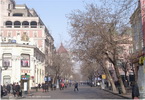 |
Harbin City |
|
GPS: |
45.7715,
126.59054 |
|
Harbin, the renowned 'Ice City',
is located in the south of
Heilongjiang Province, the most
northeastern part of China with
a shape of a swan when viewed on
a map. Not only for the city's
special position, but also as
the center of Heilongjiang's
political, economic, educational
and cultural life, Harbin is
described as the pearl beneath
the swan's neck, and plays a
vital role in communications
between South and North Asia as
well the regions of Europe and
the Pacific Ocean. |
|
|
| |
|
|
|
|
|
|
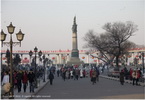 |
Harbin
Flood Control Monument
防洪纪念碑 |
xxxxxxxxxxxxx |
GPS: |
45.78063,
126.61718 |
|
The Harbin Flood Control
Memorial Tower is located in the
Stalin Park and is on the
opposite side of the Zhongyang
Pedestrian Center Street. It is
a landmark in Harbin. It
commemorates the victory of the
fight against the 1957 flood and
is finished construction on Oct.
1st, 1958. It was co-designed by
Bagis Zelev, a designer from
former Soviet Union and Li
Guangyao who is the second
generation of architect from
Harbin Institute of Technology. |
|
|
|
|
|
|
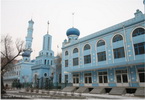 |
Daowai Mosque
哈尔滨道外清真寺e |
|
GPS: |
45.78719,
126.65107 |
The Mosque was first built in
the 23rd year (1897) of Guangxu,
Qing Dynasty(1644-1911). It is
an outstanding construction of
Islamic traditional
architectural style.
The
major buildings include prayer
hall, bath house, Xuanli
building, office room and other
facilities. The prayer hall is
located in the center of the
temple, which is opposite to the
main gate. The prayer hall,
covering an area of 426 square
meters and 13 meters high, can
hold 500 to 600 people to do
prayer. There are two tall
Xuanli buildings standing in the
left and right side of the
prayer hall. |
|
|
|
|
 |
Polarland
哈尔滨极地馆 |
|
GPS: |
45.78497,
126.58708 |
|
Covering an area of 16,000
square meters (1.6 Hectares),
Harbin Polarland is the first
polar land themed park combining
animal shows, polar land sights
and an interactive experience
into one. It is located at the
famous scenic site in this city
– Sun Island. |
 |
|
|
|
 |
Saint Sophia Cathedral
圣索菲亚教堂 |
|
GPS: |
45.77012, 126.62725 |
|
St. Sophia Cathedral in Harbin
is the largest Eastern Orthodox
Church in the Far East. It is
53.3 meters (175 feet) high and
occupies an area of 721 square
meters (0.18 acres). In
November, 1996, it was listed as
one of the Key Cultural Relics
under State Protection. Half a
year later, the city government
repaired it and renamed it as
Harbin Art Gallery. It is a
respectable landmark for
Harbiners and for tourism. |
 |
|
|
|
 |
Confucius Temple 文庙 |
|
GPS: |
45.77476,
126.67558 |
|
Construction work of the
Confucius Temple in Harbin began
in 1926 and completed in 1929.
The temple ground occupies an
area of 23.000 square meters and
its construction area is 4418
square meters now. It is not
only the most complete existing
old building in Heilongjiang,
but the largest Confucian temple
in the northeastern part of
China. |
 |
|
|
|
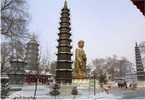 |
Temple of Bliss (Jile Si)
极乐寺 |
|
GPS: |
45.77645,
126.66446 |
|
Temple of Bliss or Jile was
constructed in 1923, it is the
biggest Buddhist building
complex in Heilongjiang
Province. The temple covers 57,
500 square meters and with a
building area of 3, 000 square
meters. |
 |
|
|
|
 |
Puzhao Temple 普照寺 |
|
GPS: |
45.77892,
126.66698 |
|
N/A |
|
|
|
|
 |
Siberian Tiger Park |
|
GPS: |
45.8181,
126.59927 |
Siberian Tiger Park covers an
area of more than a million
square meters (more than 250
acres). It was set up as a place
to breed and house Siberian
tigers.
The Siberian tiger is
the largest of the big cats. The
breeding program has been very
successful, and there are now
about 800 Siberian tigers (about
100 can be viewed) there. This
is amazing, since it is
estimated that there are only
about 500 Siberian tigers left
in the wild. Almost all of these
wild ones are in Russia, and
maybe 12 are in China. |
 |
|
|
|
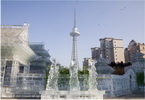 |
Harbin TV
tower |
|
GPS: |
45.74836,
126.68027 |
|
Dragon Tower in Harbin is a tall
tower of lattice steel used for
communication. It was built in
2000. The Dragon Tower, used as
the Heilongjiang Broadcast and
TV Tower, at 336 meters (1,102
ft) high, ranks as the 22nd
highest in the world and the
seventh highest in Asia. |
 |
|
|
|
|
ICE AND SNOW FESTIVAL |
|
|
 |
Harbin Ice and Snow Festival
哈尔滨国际冰雪节 |
|
GPS: |
45.78271,
126.57438 |
|
Harbin Ice Festival, also known
as Harbin Ice and Snow Festival,
is China's original and greatest
ice artwork festival, attracting
hundreds of thousands of local
people and visitors from all
over the world. |
 |
|
| |
|
|
|
|
|
|
|
Harbin festival 2001 |
|
GPS: |
na |
|
na |
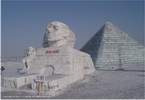 |
|
|
|
|
|
|
|
Harbin festival 2002 |
|
GPS: |
na |
|
na |
 |
|
|
|
|
|
|
|
Harbin festival 2003 |
|
GPS: |
na |
|
na |
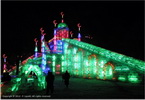 |
|
|
|
|
|
|
|
Harbin festival 2006 |
|
GPS: |
na |
|
na |
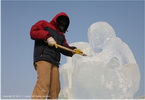 |
|
|
|
|
|
|
|
Harbin festival 2007 |
|
GPS: |
na |
|
na |
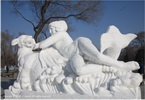 |
|
|
|
|
|
|









